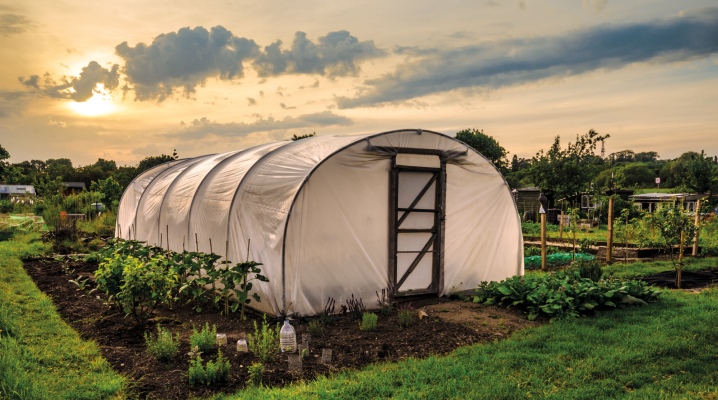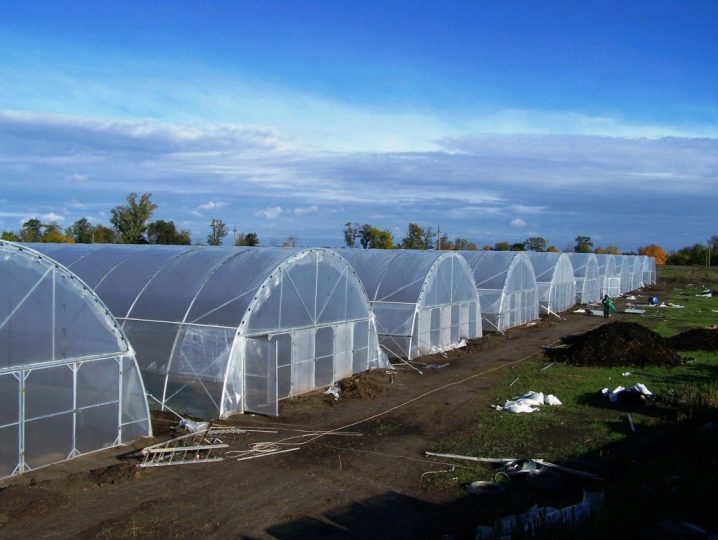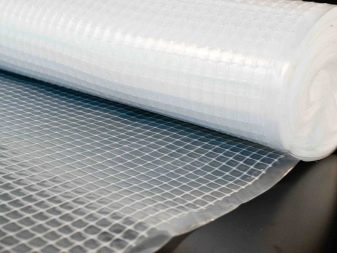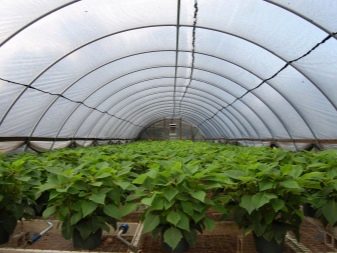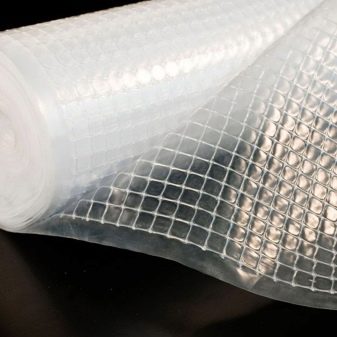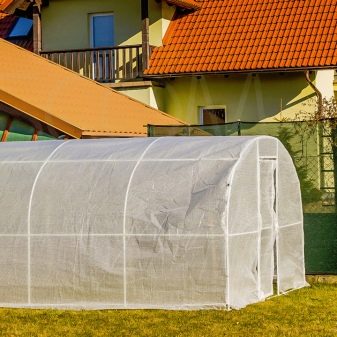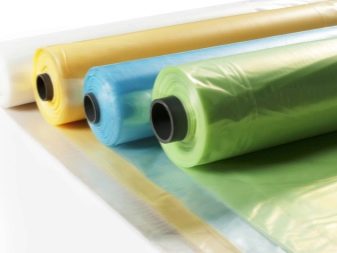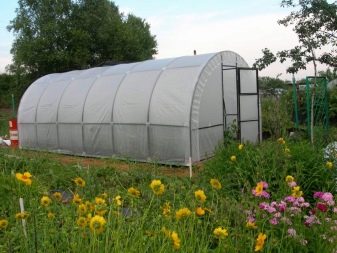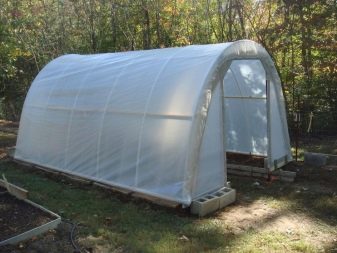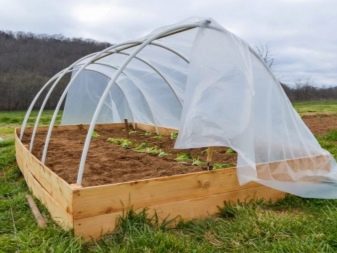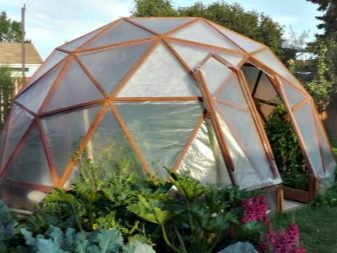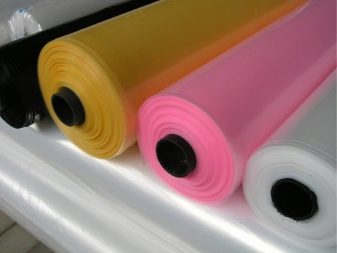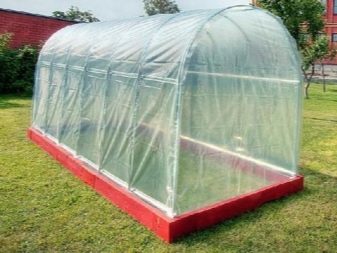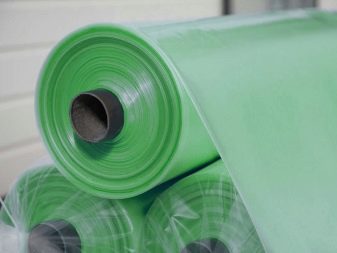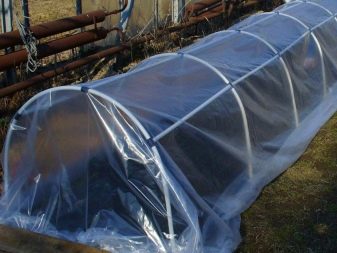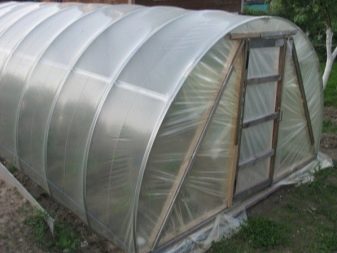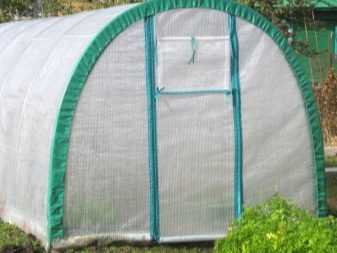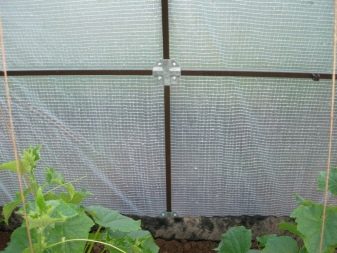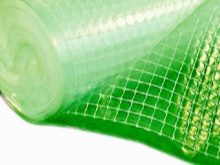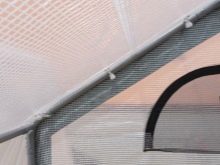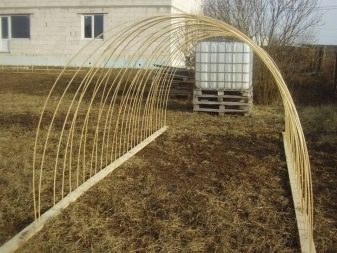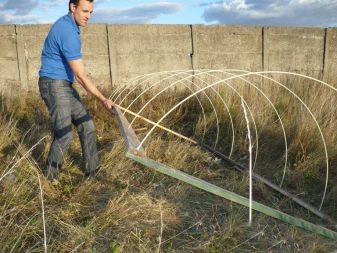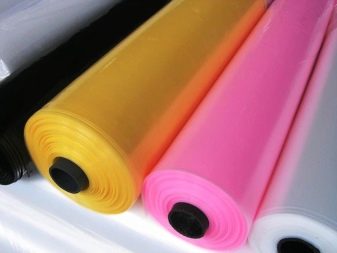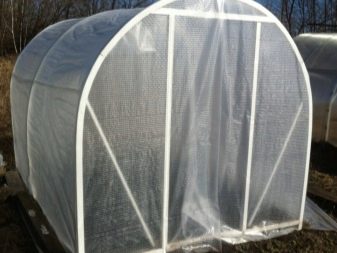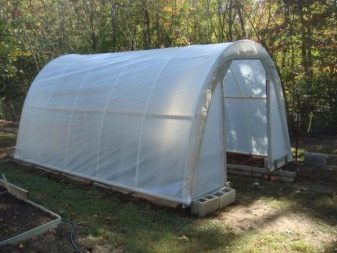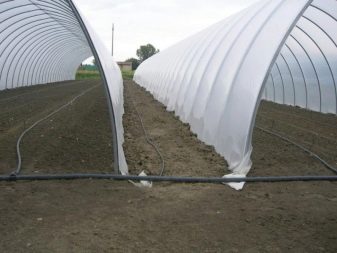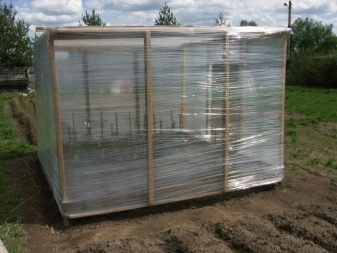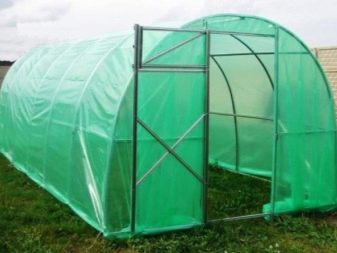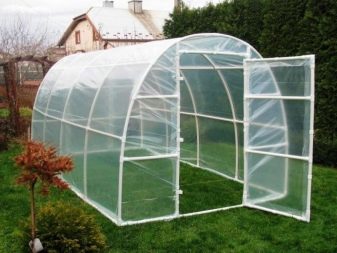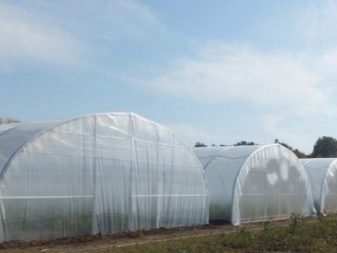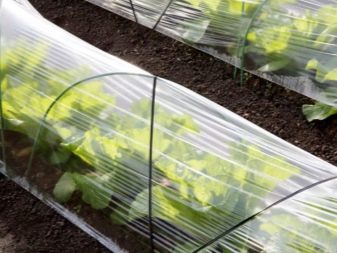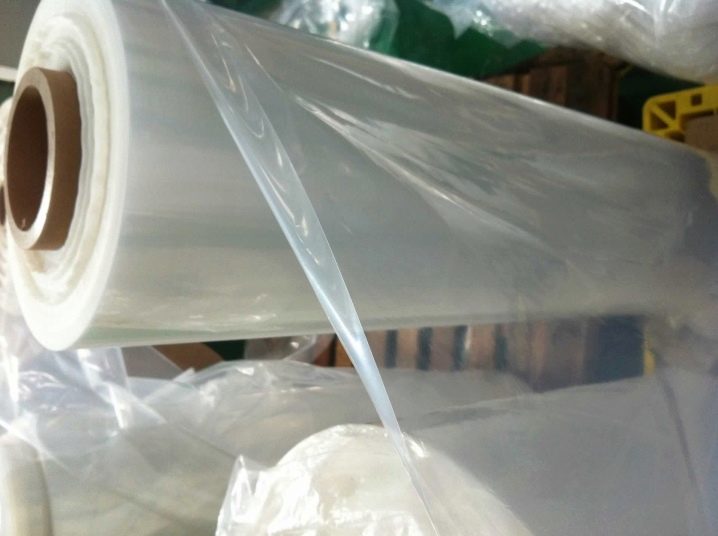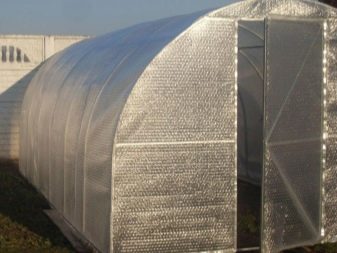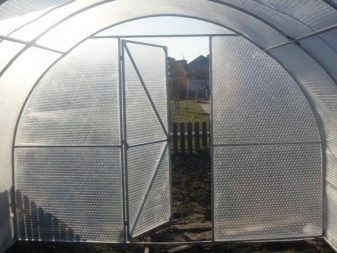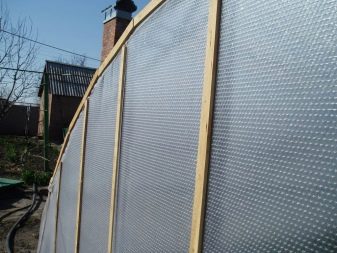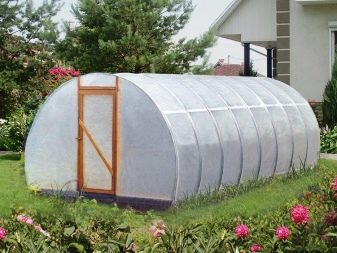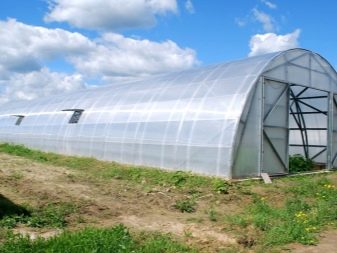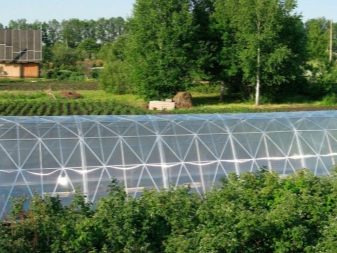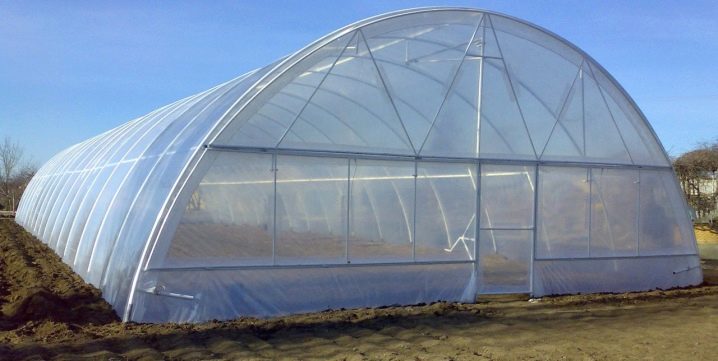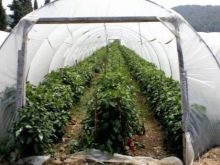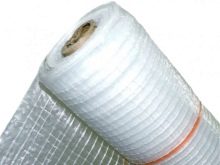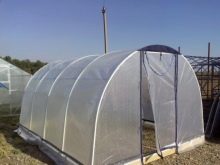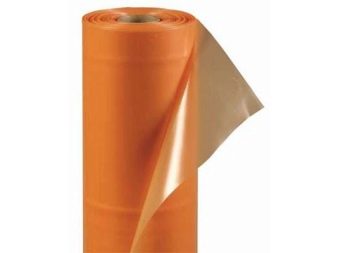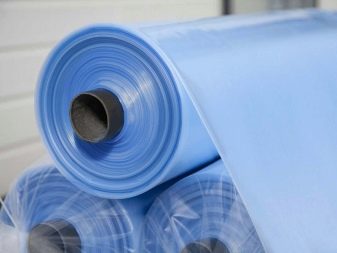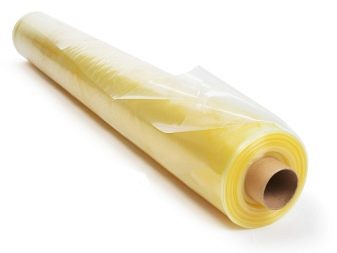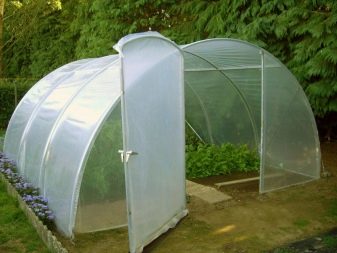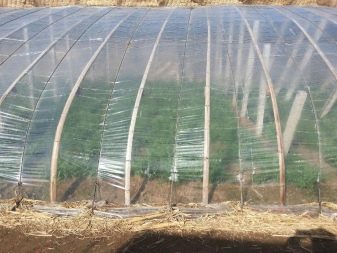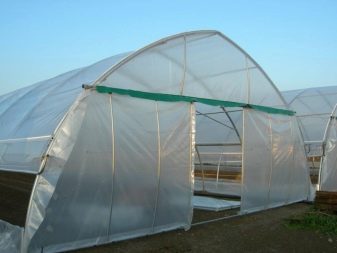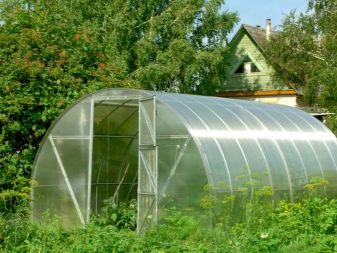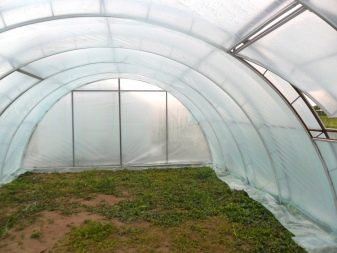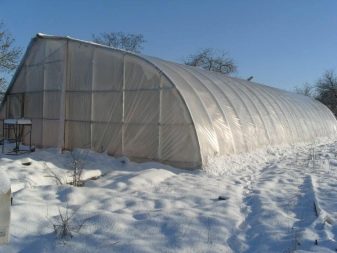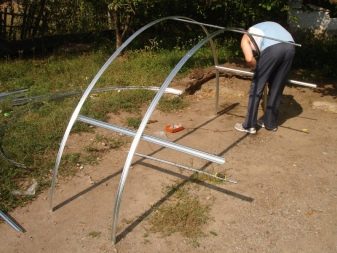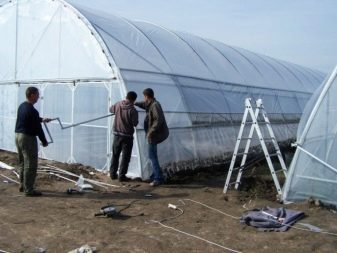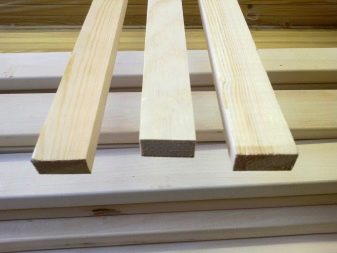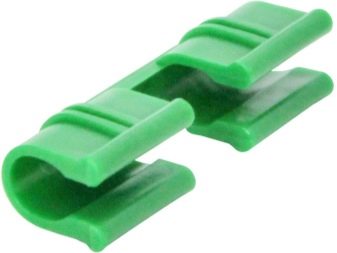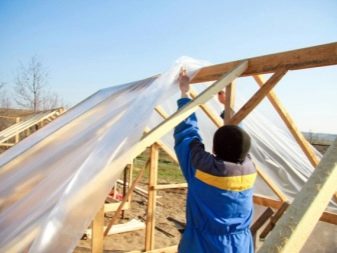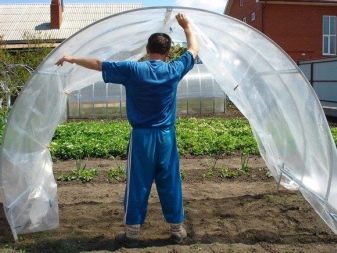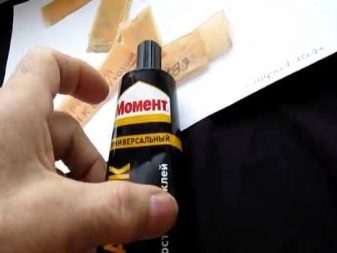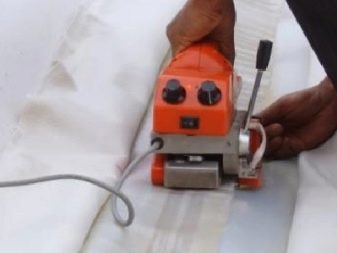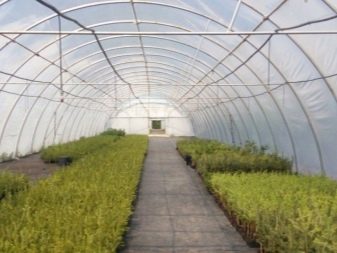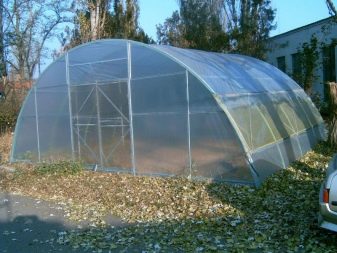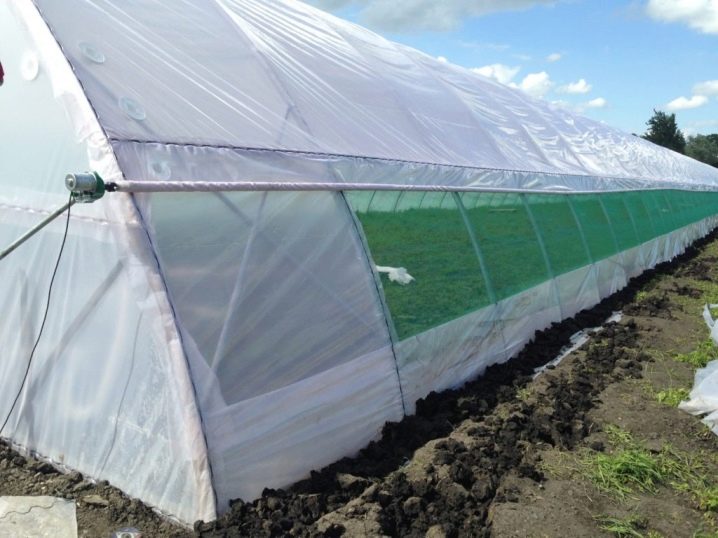Greenhouse film: how to choose?
Film for greenhouses is the most simple and affordable option that allows you to provide optimal conditions for the cultivation of seedlings and vegetable crops on the site. Below is a detailed guide on how to choose the right film, and discusses the features of each type.
Special features
The film for greenhouses has many features that make the product the most popular among summer residents and owners of suburban areas. The material has a high wind load, which is 34 m / s. Greenhouse film can be used at temperatures from –50 to +60 degrees. The permeability of light is 77%. These distinctive features make the product almost universal.
Polyethylene fused with a mesh of fiberglass, which increases the strength of the products. If you make a hole in the film, it will not creep away, and the degree of damage will be minimal. In some canvases there are special fasteners with a rubber ring. When choosing such products do not need to make cuts.
Reinforced canvas has a complex composition, which consists of three layers. The first level is a reinforced frame, the remaining layers are presented in the form of light-stabilizing canvases. The entire load is distributed over a fiberglass mesh. Due to this structure, the products have a high degree of strength.
The lack of reinforced material - low light transmission. It is lower than the traditional film by 12%.
Previously, only a polyethylene sheet was used for greenhouses. At the moment, the market for greenhouse products is developing and summer residents are offered improved counterparts, which have less pronounced disadvantages. However, identical strengths and weaknesses are common to all varieties of films.
Greenhouse film has the following advantages:
- affordable cost.Each type has its own price category, but if you make a comparison with glass or polycarbonate products, the film remains the most budgetary option;
- high level of elasticity and plasticity. Thanks to these qualities, you can create greenhouses of any shape;
- moisture resistance;
- a high degree of light transmission, along with the ability to diffuse sunlight;
- small weight;
- easy installation
The main drawbacks include the following nuances:
- short service life. When choosing a plastic film should be prepared for the fact that the next season will require the purchase of a new product. More expensive products last for 2-3 seasons;
- low degree of resistance to the rays of the sun. This leads to rapid wear of the film. In some cases, this indicator is less pronounced;
- Condensate forms on the surface of the material and can damage many crops. To eliminate this defect, you can use a hydrophilic film, which is made with the addition of special components;
- the ability to accumulate electrostatic charge leads to the attraction of dust, which reduces the transparency of the material.With a lack of manufacturers are trying to fight with the help of additives of special components.
From many gardeners you can hear that the greenhouse leaf is subject to sagging and stretching, so you need to constantly tighten it. However, the presence of such negative characteristics does not reduce the popularity of the material.
The film is the cheapest product for arranging greenhouses, so many agree that it is more profitable to replace the coating once a year than to buy expensive material right away.
Kinds
There are several types of film for greenhouses, which should be read before buying. Each type has its own characteristics and characteristics, based on which each gardener will be able to make the right choice. There are types of zippers that are convenient in their application.
Polyethylene
Polyethylene canvases for greenhouses are sold in rolls. You can purchase products whose width is from 1.2 to 3 meters. There are single layer and double layer versions, the sleeve of which is cut along the fold line.
When the sleeve is cut from polyethylene, it will be necessary to glue the fold with adhesive tape in order to prolong the service life of the material.
The best option for the greenhouse is products whose thickness ranges from 0.1 mm to 0.15 mm. Thicker options differ in long service life, but will not be suitable for use next year.
Polyethylene film is considered to be the cheapest and most popular material, but when it comes into contact with atmospheric phenomena it wears out quickly and loses all characteristics. Such a purchase would be the best option for arranging a small greenhouse at the dacha or suburban area.
Reinforced
The reinforced film is a modified version of polyethylene. Oilcloth has a special frame with a cell thickness of 8-12 mm. The framework takes all the loads on itself, distributing them over the entire surface.
It is recommended to choose a film on density. This is due to the fact that the thickness of the material may be different: it will be thicker on the reinforcement than in the central part. For growing seedlings suitable product, the density of which is 120-200 g per square meter.
The reinforcement cage can be made of various raw materials:
- polyethylene with special treatment. There are twisted, elongated types, low pressure options and monofilament;
- polypropylene;
- fiberglass;
On sale there is a special grade of breathable reinforced film, in which there are microscopic holes in the central part of the cells.
Fiberglass frame is a rare type of product.which is practically not used in Russia. Manufacturers say that reinforced structures should last at least three years. The degree of wear depends on the climate of the region in which the product is used. The tougher the conditions, the faster the products will wear out. Therefore, the climate conditions in which the film will be operated should be taken into account, should be considered before purchase.
PVC
PVC films are sufficiently thick and do not rustle, as many believe. Externally, it is similar to the material that is used to make a medical dropper. This similarity is not accidental, since in both cases the same material is used.
PVC oilcloth has optimal properties for use:
- Translucency reaches 90%. This indicator indicates that the product passes light at the maximum level, which saves on the arrangement of auxiliary light;
- PVC almost does not transmit infrared rays in the greenhouse. Only 10% of the radiation gets inside;
- UV light skipping is 80%.
Many users are deterred by the high cost of products and poor frost resistance. The material is able to withstand temperatures up to -15 degrees. Despite the presence of significant disadvantages, the service life of the film is about three years with proper use. In regions with a mild climate, the service life is extended to seven years.
Streych
The product is produced in rolls, the weight of which is several kilograms. The material is in great demand, as it has a more favorable cost, compared with other greenhouse films.
Products are of high quality. Even if the material lays for several years in the open air, it will not lose its strength indicators. Traditional polyethylene sheets already after a year will begin to tear from small loads, and will continue to crumble. Stretch film is considered warmer, as it can be wound in several layers on the bars. Fixing for this material is not required. It is simply wound on a frame or rack.
Manufacturers are constantly working to improve greenhouse films and produce modified versions. Multi-year products are in demand, which is divided into several categories, depending on the type of additives.
Perennial films are made mainly of polyethylene, sometimes you can find products that contain other polymers.
There is no specific list of characteristics, as they depend on the list of ingredients.
- Light stabilized. This film has a high degree of resistance to sunlight;
- Hydrophilic. In products there is a special layer that prevents the formation of condensate on the surface;
- Heat-retaining. The film passes the minimum amount of infrared rays into the greenhouse;
- Anti-static film repels dust;
- Reflective film is able to increase the amount of light that is required for growing seedlings. There are options in black, which allow you to fight weeds;
- Light scattering. There are several types of such films that differ in additives.You can choose a material with phosphors, with the absorption of UV rays, with the function of the reflection of infrared radiation.
Perennial films can combine several properties at once. There is a five-layer variant on sale, which combines all the unique properties: the first layer has high strength indicators, the second layer blocks UV light, the third layer is responsible for light scattering, 4 is the adjustment of thermal and infrared radiation. The fifth layer eliminates condensation on the surface of the film.
Air bubble
Air bubble film is considered a perennial material.
It consists of three layers:
- the first two layers are made of polyethylene;
- the inner layer is bubble. He is responsible for reinforcement.
Many users are familiar with this film, calling it "anti-stress." Most people are attracted by the opportunity to click the product for their own comfort. Thanks to stabilizing additives, the service life of the products is about 3 years. The term is determined for the film, which is not removed from the frame of greenhouses.
Thanks to the air that is located inside the bubbles, the material retains heat and can be used for winter greenhouses.
Specifications and description
Thickness and density affect the resistance to negative environmental factors. If we talk about the standard film of polyethylene, its thickness does not affect the duration of operation, but in the case of the use of stabilized raw materials, the thickness indicator is significant.
Not every person will be able to visually distinguish a film with a thickness of 100 microns from 200 microns. Sellers know this and often use it. To eliminate errors when choosing, it should be borne in mind that thicker films weigh more. One linear meter of film 200 μm thick weighs 530 grams. Products in 150 microns weigh 400 grams, 100 microns - 260 grams. Material suitable for a greenhouse is 150–200 µm thick.
Product color may vary. Transparent film is suitable for greenhouses, as it allows more light to pass through. To get the material of another color, manufacturers add food dyes that fade under the sun. For this reason, it is not recommended to overpay for color options.
Choose sizes that fit your greenhouse. Note that the width and length of the rolls may vary.
Manufacturers Overview
Before buying a film, you should study the list of manufacturers, get acquainted with their proposals and characteristics of the material. It is recommended to look at customer reviews about the material, since the comments of real users can tell a lot about the quality of the proposed product. Choose a film from proven manufacturers who have been on the market for a long time and have shown themselves to be a reliable brand.
A sufficient quality has a film of several manufacturers.
- NPF "Shar". This is a domestic brand, which is located in the cultural capital of Russia. The manufacturer has been producing the film for more than 25 years and offers its audience composite polymer raw materials. The durable film Svetlitsa, Rostok and Yuzhanka is in demand. The company uses in the manufacture of its own formulas, so that the service life of "Svetlitsy" is about seven years. Buyers respect this brand, as it is characterized by high rates of performance and meets the promises of the brand;
- "Agrohoztorg" It is considered the leading enterprise for the production of polymeric materials.The manufacturer offers its audience a wide range and produces a special greenhouse film with reinforcement. Users often purchase products of this brand and consider it one of the best;
- "Agrotema A" has been on the market for 25 years. The brand produces polyethylene films for various industries. For greenhouses, standard polyethylene film and reinforced versions are available. According to the users, the manufacturer offers products that justify their cost;
- “Stable” manufactures its products under the brand Stabilen. The manufacturer is known not only in Russia, but also in other countries of the near abroad. Films differ in long service life and can be used in any climatic zone. In the brand there are several types of film, for some varieties the manufacturer offers covers;
- Odyssey company known since 2005. She is engaged in release of the polyethylene and reinforced film for greenhouses. Buyers have access to various products that differ in thickness and width;
- "Polymer" - This is the best manufacturer in the opinion of buyers.Production facilities are located in Kemerovo. The brand has been on the market for over 30 years. A wide assortment is available to consumers, which is constantly updated;
- "ORA" - This is a St. Petersburg manufacturer, whose production facilities are equipped with modern equipment imported. The company produces high-quality products under the brands "Polisvetan", "Anti-mold". Buyers leave positive comments about high quality products and affordable cost;
- Richel serres de france - This is a French manufacturer offering comprehensive options to address the issue of arrangement of greenhouses. In Russia, the brand is represented by the company "Greenhouse technology". Customer reviews suggest that products do an excellent job with their responsibilities even in the winter season.
Chinese film has many distrust. However, most manufacturers offer quality products that are not inferior in quality to domestic brands. China is the best option for summer residents who want to get quality material at an affordable price.
How to choose?
To choose the film that will be best suited for your greenhouse, experts recommend using the recommendations of experts. Experts advise choosing material based on functionality.
If a film is required for equipment in a small greenhouse where seedlings are planned to be grown, you should choose the budget options, which include the standard film. To purchase such a product will require a small amount. Next year for seedlings will need to buy a new film.
If film is required for year-round use, you need to take into account the price category of the product and its characteristics. For such purposes, recommended film with a high degree of wear and agrotechnical properties.
Before buying, you should consider in which region the material will be exploited., as well as features of the site. If the greenhouse is located on a hill, and the territory is exposed to frequent winds, it is recommended to choose more durable products. For a quiet climate zone or for sites that are located in the lowlands, you can purchase medium options for a suitable price category.
Each summer resident selects a suitable film, based on their individual preferences. Manufacturers are constantly working on the development of greenhouse cover, so you can follow the innovations and experiment.
How to fix?
Fixing the film on the greenhouse is the second stage in the arrangement of the structure. The first step is to install the frame part. To work fit frame made of wood or metal. After assembly, you can start preparations to stretch the film itself.
After you need to calculate the required amount of film, according to the dimensions of the greenhouse. In their calculations should be taken into account the fact that the roll coating will overlap. At the joints will require 100-250 mm. To eliminate the shortage of products, it is necessary to add 10% to the selected quantity. That is, if the length of the greenhouse is 6 meters, you will need to add to the measured value of 60 cm. You need to cut the film according to the marked sizes. The pattern of the end parts should be carried out with an increase of 250 mm for fastening.
The clip can be created from the following material:
- wooden slats size 15 x 30 mm;
- strips made from old linoleum;
- special clips, which are galvanized rail - guide, 3 meters long., fixed on the frame beforehand, after which you can stretch the selected awning onto it and fix it with a plastic insert;
- cord, rope or elastic band;
- tape for packaging, which is made of plastic;
- grids with large cells are considered the best option for windy regions.
First you need to cover the main structure with a film, after which you can proceed to fixing the material on the ends. Surplus film should be sprinkled with earth.
This option is suitable to attach the film to a metal, plastic or wood frame.
How to glue the film?
To make bonding, you can use wooden slats, as well as screws and nails. The best option is the tape for packaging, fastened with staples. You can solder the film with a soldering iron or iron, glue with special glue, sew with threads.
To solder the edges of the canvases, it is required to put one layer on another and through a fluoroplastic film to pass along the section with a soldering iron or a hot ironsoldering iron. If there is no PTFE film on hand, you can replace it with two narrow and even metal strips. To weld the canvas, you need to clamp the film between the iron parts and melt the protrusions on the edges with a length of 1 cm. A blowtorch or a spirit lamp is suitable for these purposes.
Pasting of a polyethylene film is possible with the help of the famous Moment glue. In advance, it is necessary to degrease the upper layer with a solvent. For polyamide products suitable adhesive agent PK-5. After the seams are glued, they need to be ironed with an iron heated to 60 degrees.
Useful tips
Competent installation and careful actions guarantee a long service life of products and the preservation of their useful qualities.
Correctly fix the film on the surface of the frame and eliminate damage to the material can be guided by the recommendations of the pros.
- If mounting on a timber frame is performed, all components that will come into contact with the film should be treated with sandpaper. The presence of defects will cause punctures or tears to appear on the material. It is important to remove all burrs, sharp edges and bumps.
- Wood is treated with special antiseptics or paint. Before proceeding with the fastening of the film, it is recommended to dry the frame, since the solvents present can destroy the polyethylene.
- Metal frame should be sanding. Even the slightest hint of rust needs to be removed and the weld seam is machined with a grinding machine.
- The fastener must be positioned so that its protrusions are not in contact with the film. If it is impossible to avoid contact, a polyethylene foam gasket will save.
- It is necessary to cover the frame of the greenhouse with a primer, after which you can begin to apply paint of a light shade. Dark objects heat up quickly in the sun, causing damage to the film.
- It will be useful to strengthen the ridge and corners. In most cases, the film is rubbed on these areas of the roof. This is because at these points it fits snugly to the frame. It is recommended to glue double-sided tape inside and outside these areas. Need to glue and place the fold of the sleeve.
- Wire ends need insulation. Such a measure would prevent damage to the film material.You can install auxiliary rafters from wooden slats.
Care instructions
To increase the life of the film, it is enough to observe the following recommendations:
- mount products should be at a temperature of 10-20 degrees of heat, as well as in calm weather, to avoid sagging;
- one-year material is stretched a couple of days before planting;
- do not use screws, nails and wire;
- to remove dust or dirt, you will need a regular irrigation hose, as well as a soft sponge and a solution of laundry soap or dishwashing detergent.
All the above recommendations show how to properly handle the film for greenhouses. Their observance will help to extend the service life of products.
How to choose a film for greenhouses, see the video below.
